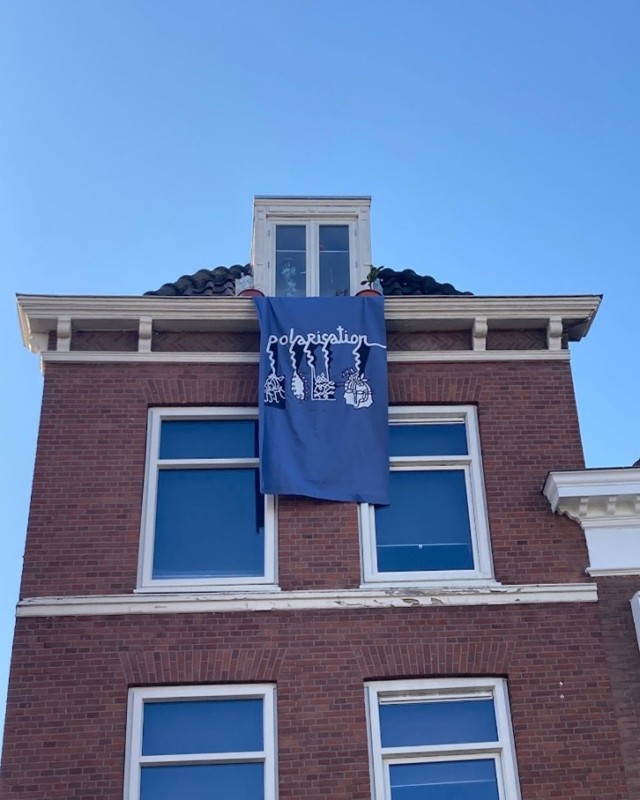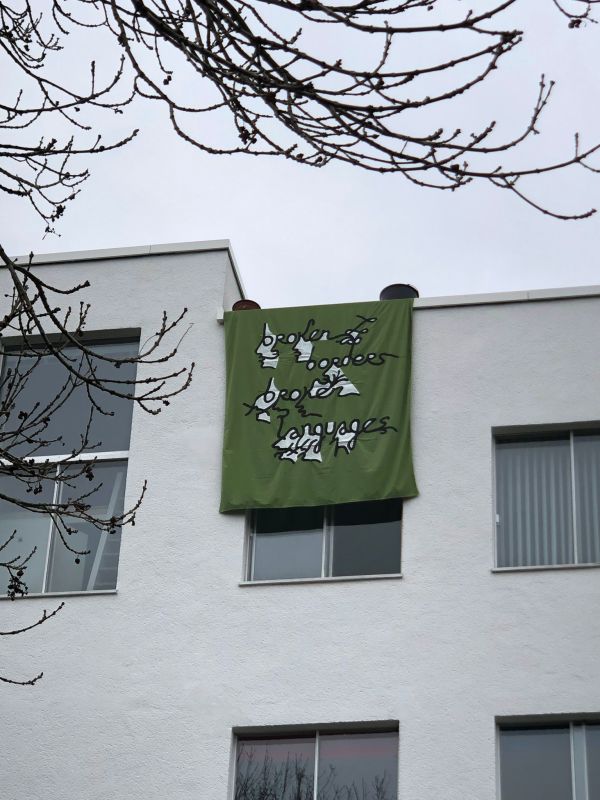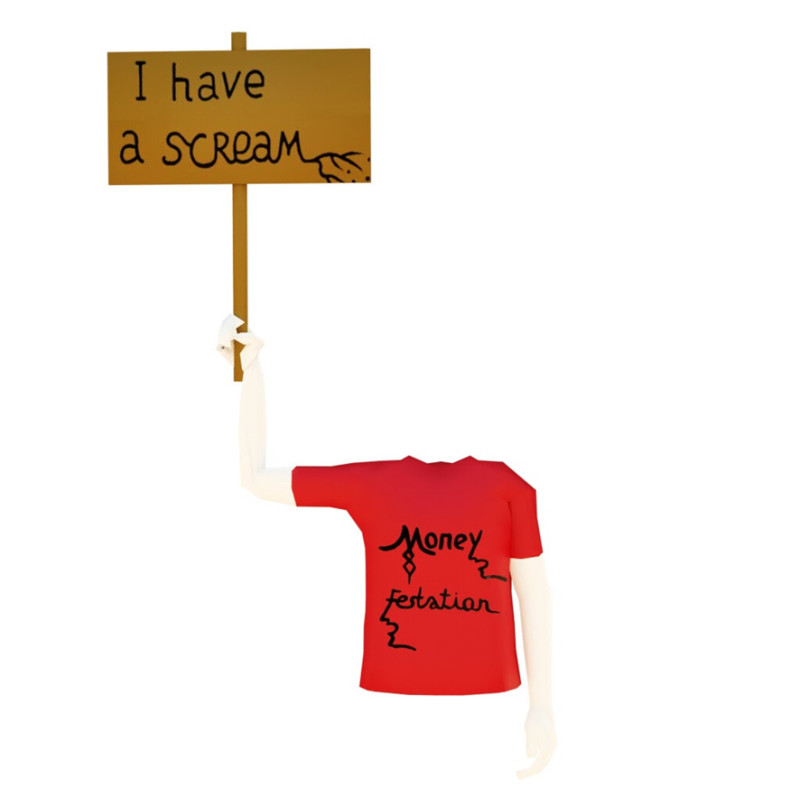The first ever Metaverse protest
|
|
January 23rd, 2022 : The first ever protest took place in the Decentraland metaverse, under the banner of Babi Badalov. Organized by Dutch non-profit foundation Superflus, this protest aimed to criticize “how a decentralized virtual environment that is idealistically free and separated from oppressive structures of our own (physical) daily life is seeing rampant capitalism and repeated shapes of consumerism, (digital) inequality, exclusion, and extraction.” Happening in front of a recently opened Samsung digital store, the protestors were wearing the iconic t-shirt by Babi Badalov, “MoneyFestation”, and holding his “I Have A Scream” banner. A total of 48 ‘wearable’ digital artworks (NFTs) were created for the participants, the organizers and the artist.
|
|
|
The gallery sat with Robbie Schweiger, art historian and co-founder of Superflus, to talk about the genesis of this project that might shape the future we are entering. |
|
|
How did the idea come about ?
|
|
|
From September 27 – October 31, 2021, Babi did a residency at Billytown in The Hague. It was initiated and organized by Superflus, a non-profit foundation, founded by Elsbeth Dekker and me. Superflus is based in The Netherlands and dedicated to the presentation, production and criticism of contemporary art. During his stay in The Hague, Babi led a three-day workshop hosted by collective beuys bois, in which he and the participants discussed mobilization and resistance through art and explored the power of a personal voice and how to convert this into language and images. At the end of his stay Babi’s studio was open to the public. People could take a work by Babi (banners and t-shirts with his slogans and wordplays) on loan to wear, hang out of their window, or from their balcony between November and December 2021. Like this, Babi’s works intervened in the public space of The Hague, which is full of national flags, emblems and symbols, as it houses embassies, ministries, and European and International organizations.
|
|
|
For a few years, my friends Olivier Biggs, Viktor Jensen-Torp, Ad Korf and I have been critically exploring the intersection of recent technological developments (blockchain, NFT’s, metaverse, DAO’s, collectibles), the artworld and the societal impact of these developments. We all have full time jobs but we come together a few times a month for dinners and discussions. It was initially more about learning than realizing projects. I remember one night we talked about the launch of a digital collection of Dolce & Gabbana (‘wearables’ as NFT’s) for Decentraland. It made me think of the t-shirts Babi was making and the conversations with Babi about manipulation by capitalist structures. This is how the idea was born. We discussed the idea to extend Babi’s residency project for Superflus with this digital component and all agreed.
|
|
|
Who are the initiators of the protest ?
|
|
|
Elsbeth Dekker, art historian, lawyer (curator and co-founder at superflus); Robbie Schweiger, art historian and slavist (curator and co-founder at superflus); Olivier Biggs, copywriter and marketeer in the NFT ticketing space; Ad Korf, social designer and city planner; Viktor Jensen-Torp, UX developer.
In the future we want to continue initiating and facilitating artistic interventions in digital contexts.
|
|
|
How did you organize it ?
|
|
|
One step at a time. Initially we weren’t sure we were able to realize our plan the way we envisioned it. There were several hurdles to clear; the first was taking Babi’s work into the digital space by designing and creating an NFT ‘wearable’, for which we received great help from the team at Clurge.com. Now we didn’t only have a digital shirt, but also a protest sign !
|
|
|
Next up was getting our wearable into the metaverse. With the recent hype surrounding the term and an almost utopian image being created about futuristic freedom and inclusiveness, it can be a little surprising that there are still gatekeepers and terms & conditions every step of the way. This was all a part of the process of course. After the wearables were approved by the Decentraland legal department, we were able to send the shirts to participants of the protest.
We rounded up friends, family and other potentially interested parties and guided them through the steps of setting up a Metamask crypto/NFT wallet, and subsequently entering Decentraland to join the protest. This was definitely a challenge. It was new to most of them and required patience on the participants’ side.
|
|
|
It happened in the Decentraland metaverse in front of the Samsung Flagship store. This location was selected not to specifically target the brand, but rather as a very current embodiment of the hyper commercialization of the metaverse as a whole. Through this protest, Badalov’s mission and work were used to emphasize this irony. How a decentralized virtual environment that is idealistically free and separated from oppressive structures of our own (physical) daily life is seeing rampant capitalism and repeated shapes of consumerism, (digital) inequality, exclusion, and extraction.
|
|
|
One of the questions we had (and still have) concerns the extent to which fundamental rights to freedom of speech and right to protest can be extended to a digital universe; how rights and ideas within our physical reality relate to a digital reality. The protest seemed a good strategy to explore these questions.
One of the participants, curator Inez Piso, made an interesting remark during the online gathering that preceded the protest:
“Babi’s work revolves around systems and structures that condition us to stay within our cultural borders. Language is one of them. He plays with that and tries to go beyond borders in the real world. Entering Decentraland is a very nice way of putting into practice what his art is about.
This metaverse is supposed to be accessible for everybody in the world, but on the other hand, it is not for people that don’t know how to use this technology; people like me. That’s why I really like this format, a kind of workshop in the beginning, where you take us by the hand very slowly and patiently, step by step, and I think that is very much part of the work - crossing boundaries and making things accessible.”
|
|
|
Was this the first protest in the metaverse?
|
|
|
Yes, as far as we know it was.
|
|
|
|
|








